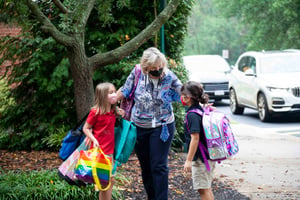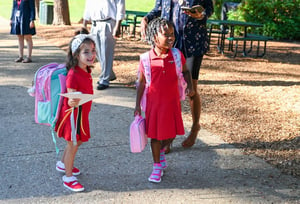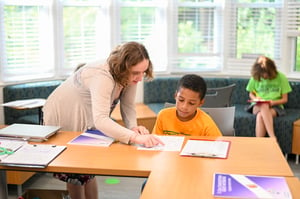Remote Teaching
When the Virginia Governor announced the shut down of schools in March 2020, Carlos Hernandez wasn’t sure at first how to tackle teaching remotely. As Congressional’s STEM Educator (this year he became the 6th and 8th Grade Science Teacher) the hands-on nature of STEM presented some issues for teaching remotely. “It was overwhelming at first and felt like a sink or swim situation,” he said. I finally decided just to let myself sink and find a way to work it out. Once I did that it was very freeing.”
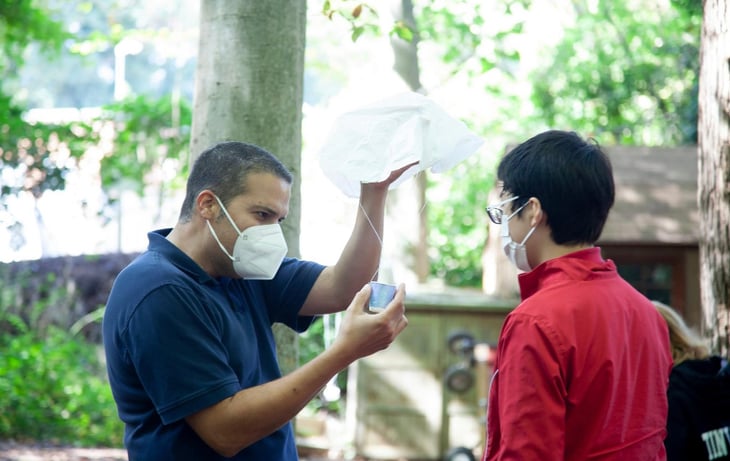
Drawing on a previous experience working in a museum where he would produce written outlines of activities that children could do at home, Mr. Hernandez began working out his remote lesson plans. “I started searching around my home to see what items I had on hand that I thought my students would also have, such as toilet paper rolls, tape, paper, glue, etc. I then started recording video demonstrations of the activities. It was definitely the MacGyver approach,” he admits.
He was thrilled when he’d receive pictures of his students engaged in the STEM activity he had prepared. “Some students even sent me their own video demonstrations,” he laughed. The STEM activities were wide-ranging, including sound, optics, and outdoor activities, and varied in complexity depending on the grade. He gave an example of an activity he did with younger students using easily accessible materials. “It was a simple but fun xylophone activity, where the students filled up glasses with varying amounts of water and observed the different sounds by tapping or even circling the top of the glass with their fingers to make music.”
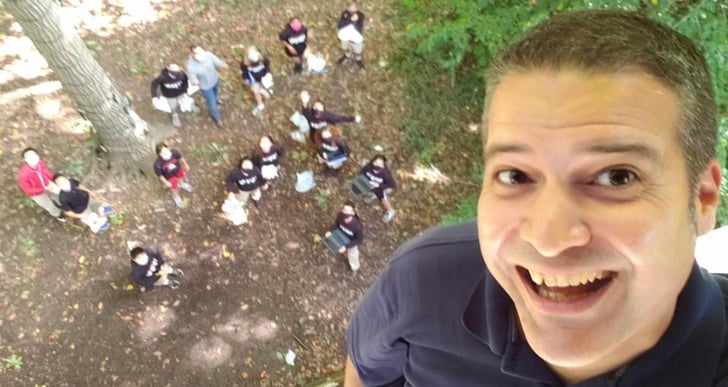
Returning to In-Person Teaching
When it came time to return to the classroom this past fall, Mr. Hernandez admits to being very nervous, but after listening to the science, seeing how the school had organized the classrooms, and multiple conversations with the school’s Health Expert, he arrived back ready to teach. “I thought about my students and family and knew that they needed the stability of a year as close to normal as possible,” he said.
This year, Mr. Hernandez became Congressional’s 6th and 8th grade science teacher; however, even being back in person, due to the restraints necessary because of COVID, teaching had to be modified. “Ideally, I would do two hands-on labs per week,” he said, “but I have had to change how I do these demos. I’ve found great tech resources including online simulations and have learned to design labs around them.”
Bimodal Teaching and Learning
Bimodal learning is another outcome of the pandemic that has required Mr. Hernandez to modify how he teaches and necessitates lesson planning to be done at least two weeks ahead. Asked how he managed to incorporate the bimodal students into the classroom, he stated, “I decided to treat the camera as a person in the room. But it’s hard for bimodal students to ask questions. I can have a side conversation with an in-person student if they have a question. The interaction with bimodal students is always in front of the whole class, so I encourage them to email me with questions. I also plan frequent individual meetings with bimodal students, especially on early release days.”
Silver Linings
Teaching during a pandemic has required a higher use of technology for many teachers. “Tech has factored in more this year than any other,” he said. But not just in teaching. He’s found ways to use technology to help him in other aspects of his job. In order to keep as clean an environment as possible, he stopped handing out papers. “I’ve stopped printing and provide my lessons and notes online and students submit their work online. This also means I no longer have to haul graded papers back and forward from home to school. It is all online and much more efficient.”

Carlos Hernandez
Science Teacher, Grades 6 & 8



